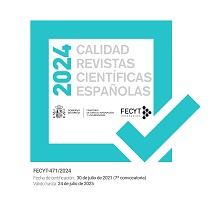Prenatal care vs obstetric outcome perinatal
Supporting Agencies
- UNIVERSIDAD DE GUANAJUATO
Abstract
The coverage of prenatal care, quality and delivery care is reflected in the resolution as obstetric morbidity and mortality of mother and child. This research addresses the issue of the impact of prenatal care on the obstetric and perinatal outcome.Objective: To determine the impact of prenatal care on obstetric outcomes achieved.
Material and method: using a reconstructed cohort study in a population cluster randomly obtained daily during the month of June (2010), 419 were women in labour. The research material was the mother - child. Some of the studied variables were age, prenatal care, number of visits, weight, height, blood pressure, fundal measurement, method of pregnancy termination, product weight, sex, apgar, destination of the product, maternal complications, etc. It was used in the statistical program Primer ® Risk ® obtaining the RR, RR with a confidence interval of 95%.
Results: 395 products were analysed over 20 weeks and 35 children, of the goods over 20 weeks (f = 355) mothers had prenatal care (89.87%) and 40 did not have it (10.13%), dystocia were more common in mothers with prenatal care, X2 = 7.73 RR = 1.45 95% CI 1.11-1.90, maternal complications were similar proportions in mothers with and without prenatal X2 = 0.0091 RR = 0.96, difference in proportions p = 0.899, hypertensive disease of pregnancy was the most frequent complication (74.6% of them) without difference between the mothers had no prenatal care or X2 = 0.0010.
Conclusion: Our results indicate that in this particular group studied, the presence of prenatal care is not a factor that helps an obstetric resolution and favourable perinatal, except for the macrosomia prevention.
Downloads
The works published in this magazine are subject to the following terms:
1. The Publications Service of the University of Murcia (the publisher) preserves the copyright of the published works, and encourages and allows the reuse of the works under the license for use stated in point 2.
© Servicio de Publicaciones, Universidad de Murcia, 2011 (© Publications Service, University of Murcia, 2011)
2. The works are published in the electronic edition of the journal under Creative Commons Reconocimiento-NoComercial-SinObraDerivada 3.0 España(texto legal) “ a Attribution-NonCommercial-NoDerivatives 3.0 Spain license (legal text)”. They can be copied, used, broadcasted, transmitted and publicly displayed, provided that: i) the authorship and original source of their publication (journal, publisher and URL) are cited; (ii) are not used for commercial purposes; iii) the existence and specifications of this license is mentioned.
3. Conditions of self-archiving. Authors are allowed and encouraged to electronically disseminate the pre-print (pre-reviewed ) and / or post-print (reviewed and accepted for publication) versions of their works prior to publication, as it ensures a wider circulation and dissemination which may lead to a possible increase in its mention and a higher scope among the academic community. RoMEO color: green.













